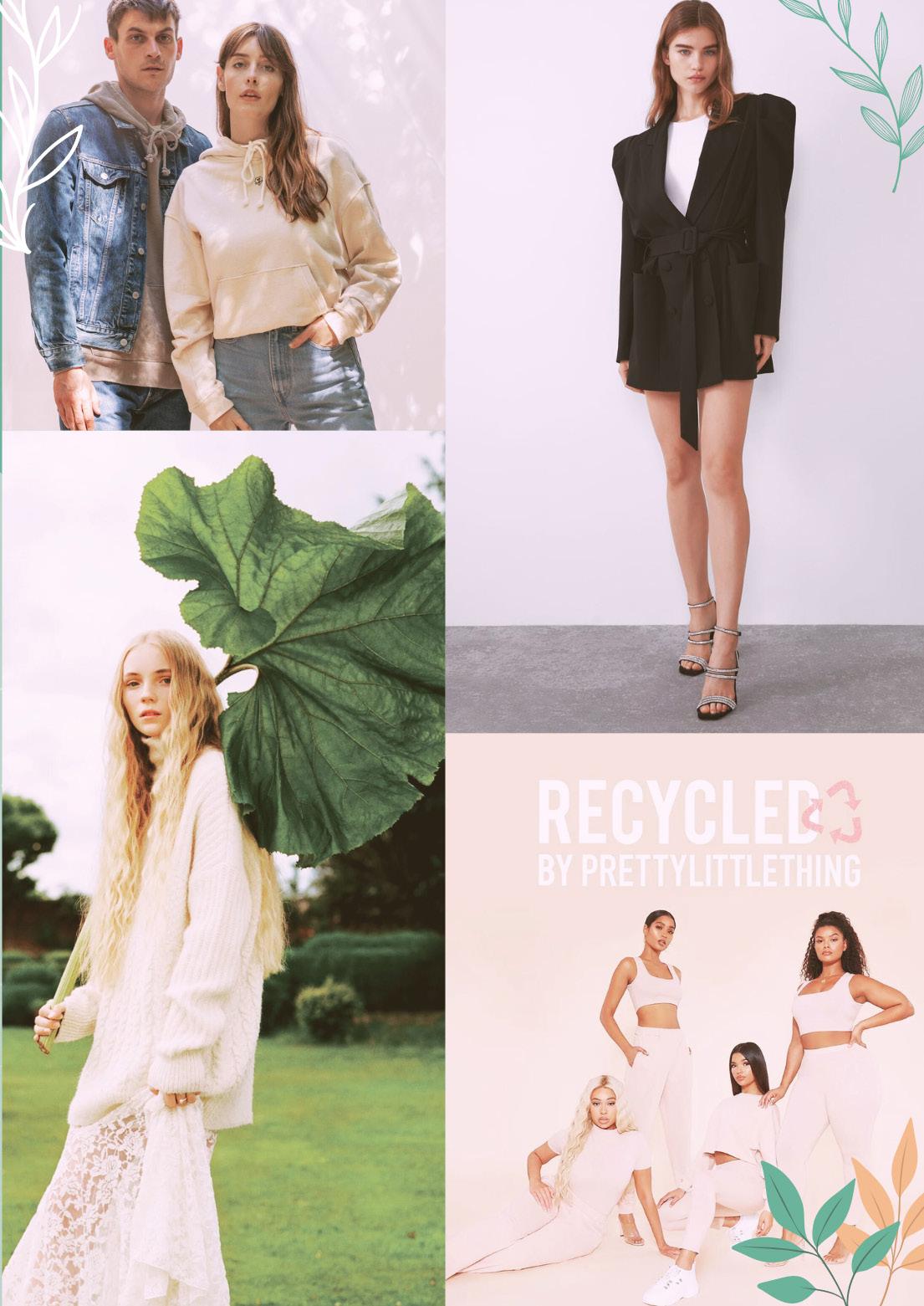
3 minute read
Sustainable Fashion: Is It The Future?
By Emma Stone
Fashion trends are changing more often than they ever did, but sustainability may be the biggest ‘trend’ in fashion right now. From companies such as Zara who were two steps ahead of everyone to other brands like Pretty Little Thing who haven’t yet jumped onto the latest, Emma Stone keeps us in the thread with the latest.
Sustainable fashion, also known as eco-fashion, is a term used to describe companies that recycle, upcycle and redesign and also ensure working within the brand is fair and ethical.
Companies that have adopted sustainable fashion are Zara, H & M and Levi’s. Whereas companies such as Shein and Pretty Little Thing haven’t yet adapted to a newer lifestyle just yet but as trends begin to change, will more brands turn into a sustainable brand?
As with most fashion brands, each has their own pros and cons. Sustainable fashions brands tend to be more expensive because they take more care in respecting their workers and ensuring everything remains ethical within the business. They also try to recycle and reuse materials. By making these small changes, companies will have a smaller carbon footprint and reduce the number of toxins released into the atmosphere. Future generations ultimately benefit from improved air and water quality, fewer landfills and more renewable energy sources.
At this year's London fashion week a company called LVFD from Czech Republic showed their new sustainable collection. The collection was designed by a woman called Lucy Vaclav who during the pandemic, created LFW (London Fashion Week) with the intention of creating “sustainable and ethical, but sexy clothing”. Lucy’s brand stands out from other sustainable fashion brands because of her bold and creative styles.
Emma interviewed Annie Fowler and asked her thoughts and views on sustainable fashion. Annie responded “I think sustainable fashion is the future and even though it can be more expensive which a lot of people can be put off by, myself included, it needs to be more practised in the fashion industry. It is such a big industry and it can make a huge impact on our future if they make this change for the better.”
Emma also had the opportunity to interview Molly and found out whether she tries to buy from sustainable fashion brands, she said “I think places like Whering, which don't actually sell clothes but encourage sustainability through the use of clothes you already have, is the best way to go when aiming for sustainability. And then shopping small when you do need to buy new things. Through buying from smaller businesses people are also helping local economies and helps individuals rather than funding massive corporations, which promote fast fashion and unethical working conditions.”
Fast fashion brands are found to be less expensive because these brands cut their costs by wasting materials, for example they don’t have an issue with not recycling materials. Therefore sustainable fashion is more expensive because they reduce their waste by ensuring that they invest in small scale production lines or order materials designed to fit.










